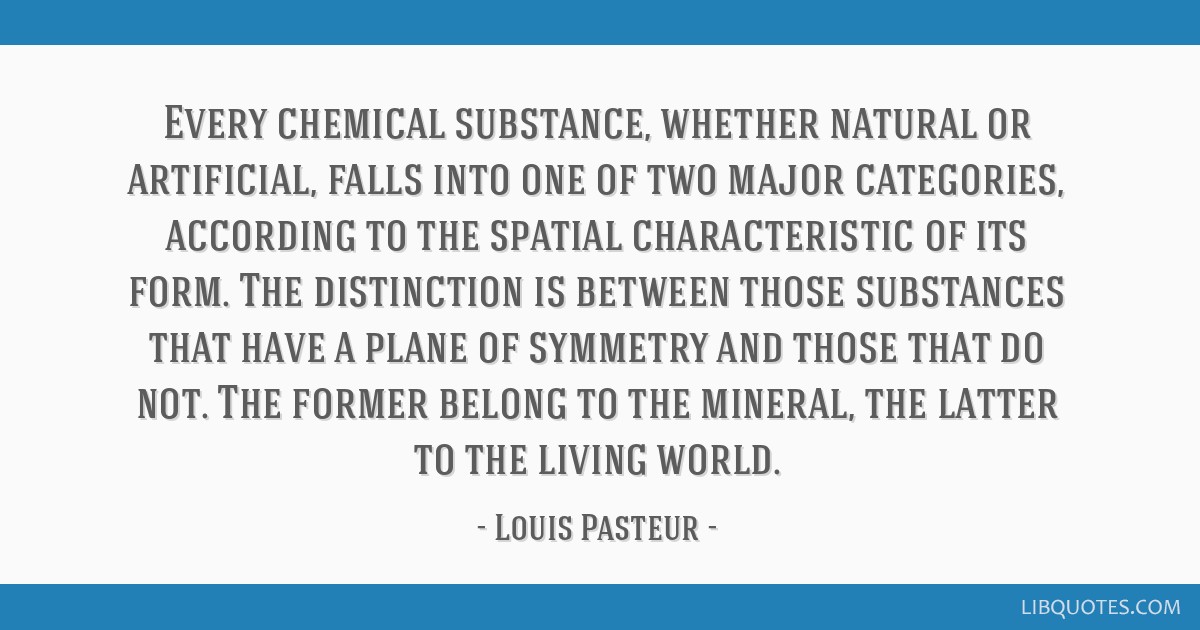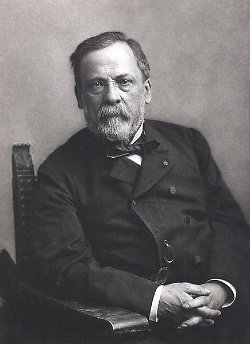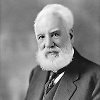Every chemical substance, whether natural or artificial, falls into one of two major categories, according to the spatial characteristic of its form. The distinction is between those substances that have a plane of symmetry and those that do not. The former belong to the mineral, the latter to the living world.
Pasteur Vallery-Radot (ed.), Oeuvres de Pasteur (1922–1939), Vol. 1, 331. Quoted in Patrice Debré, Louis Pasteur, trans. Elborg Forster (1994)























